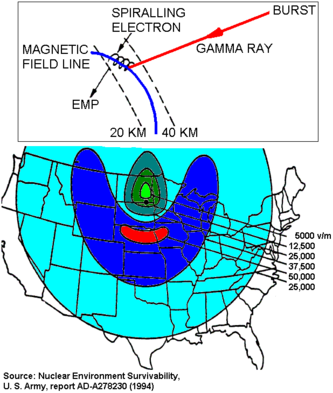Living in Whoville,
I can't find a current article on the odds of nuclear war with North Korea but General McMaster said after Wednesday's ICBM launch that it is increasing daily. In early October a 10% risk was widely quoted. "I think it's increasing every day, which means that we are in a race, really, we are in a race to be able to solve this problem," McMaster told an audience at the Reagan National Defense Forum in Simi Valley, California. http://www.cnn.com/2017/12/02/politics/mcmaster-potential-war-north-korea/index.html
Let's also agree that US/South-Korean military games, "Vigilant Ace", the largest ever, and practicing first strike attack to debilitate North Korea, are existentially threatening to North Korea, and take it to the edge of a hair-trigger response. Those 24 stealth fighters can sneak in unseen, make critical strikes, and direct conventional fighters, bombers, artillery and missile strikes. http://www.businessinsider.com/north-korea-should-fear-us-south-korea-air-drill-stealth-jets-2017-12 http://www.newsweek.com/us-military-practices-strikes-north-korean-nuclear-sites-biggest-ever-air-729923
There is actually a lot of political support of a first-strike to destroy North Korea, no matter what the cost to civilians everywhere, including the US.
"The slate of options open to the U.S. shrinks with every North Korean launch. Military action is increasingly being debated in Washington, Tokyo, Seoul and Canberra. Options considered ought to include a multinational naval blockade of the peninsula; a conventional “surgical strike” on Kim’s ICBM sites; a clandestine Special Forces operation to neutralize North Korea’s leadership; or perhaps a preemptive tactical nuclear attack... continuing the previous administration’s policy of “no policy” is no longer an option. Kim Jong Un needs to understand the consequences of his actions." http://thehill.com/opinion/national-security/363050-its-time-to-use-surgical-strikes-naval-blockades-and-more-on-north
The other opinion is that there is not a viable military option to take out the North Korean nuclear program, based upon the cost of lives of American "allies" (er, client-states), like Japan and especially, South Korea. The certainty of North Korean destruction of life and property of Seoul, through artillery and rocket barrage, weigh highly on South Koreans. American military is also targeted and would take losses in South Korea and Okinawa. Okinawa and the rest of Japan would be partly defended targets. The new consideration is that North Korea could directly attack the continental US, and would be under tremendous pressure to use-it-or-lose-it, immediately, the first launch of all. This would be a bloodbath. (This article does not go nearly far enough in it's analysis, recommending more military spending to counter North Korean offensive capabilities. Nothing printed by the empire considers the possibility of the empire not getting it's desire.) Chairman of the Joint Chiefs Joseph Dunford offered in July that war with the North would entail the “loss of life unlike any we have experienced since World War II.” http://thehill.com/opinion/national-security/363012-there-is-no-military-option-to-take-out-north-korean-nuclear
Why North Korea's next nuclear test could lead to war, is another piece of analysis, which does not reach critical mass, but is informative, anyway. North Korea has caved in the mountain it used to test under. A demonstration of nuclear capability above ground is thought to be the next step. I think the world assumes that what worked underground would work above ground, but just what kind of device is it? (Not really considered here, though alluded to, is the possibility that North Korea tests another missile, firing it straight up for 3000 miles, or so, and detonates the H-bomb 3000 miles away from Earth. I don't know what treaty covers that, but North Korea didn't sign it. The detonation would be directly above North Korea, but the EMP effects would be experienced over South Korea, Russia, China and Japan, though they would be lessened by the vast area covered, due to the extreme altitude. Better yet would be to set off two, as small as they could be made. Notification, not damage, is the objective, I assume. Alternatively, the H-bomb could be detonated as high as feasible over the North Pole, minimizing damage to electronics, and serving clear notice that EMP over the US is ready for delivery.)
Russia is really warning the US not to force North Korea to misstep and launch a devastating attack. The Vigilant Ace operations are clearly designed to probe North Korean defenses, making targeting radars turn on and show their locations, and their patterns of operation. Realistic threats are needed to flush out the defenses. More realistic threats trigger counterattacks, right? Where's the fine line? "Adam Mount, a senior fellow at the Federation of American Scientists for nuclear and defense policy, told the Journal that a single “radar blip or a mistaken field report” by the North Korean military could induce Pyongyang to attack. “Adding stealth and bomber aircraft makes the drill appear less like a defensive exercise and more like a rehearsal for attack,” he said." https://lobelog.com/taking-russias-stark-warning-on-north-korea-seriously/
Wikipedia is pretty thorough in it's discussion of Nuclear EMP details and attack scenarios. Most testing seems to have been limited to altitudes of 300 kM or less. Enhanced and "super" EMP warheads can be designed, and EMP increases as the square-root of the nuclear yield, a law of real but diminishing returns with size. This implies that 3 small EMP devices on a missile could do much more damage than one large one, especially if spread out far above the target area. How far? I can't tell. Kansas burst famously hits all US.

Here's the US electric grid, which is at least somewhat separated by region. The northeast is oldest, most vulnerable, and very dense. Not discussed, anywhere that I can see, is how nuclear reactors would be affected. They rely on the grid to maintain cooling and safety functions. How many Fukushimas?
Here is the reach of north Korean missiles, based on tests this year. I'd put one red-zone over New York and Washington, and another over LA and San Diego. How about you?
Nuttin' fer Christmas
No comments:
Post a Comment